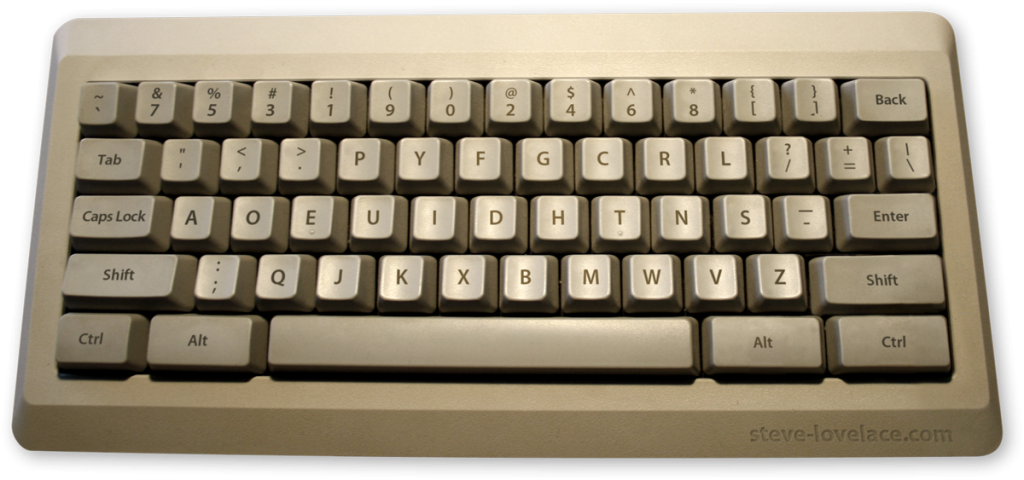

- #UNITED STATES DVORAK KEYBOARD MAC OS#
- #UNITED STATES DVORAK KEYBOARD INSTALL#
- #UNITED STATES DVORAK KEYBOARD DOWNLOAD#
- #UNITED STATES DVORAK KEYBOARD FREE#
Therefore, you can continue using your Mac OS X, Microsoft Windows, GNU/Linux and BSD, etc, etc and their layouts, yet, they can simply by switched to the one of the Dvorak ones. Presently, almost any operating system allows you to switch the current layout to Dvorak. Included in distributive of major Operating Systems.

Maximizes speed, accuracy and efficiency of typing.The Dvorak layout based on studies of frequency of using certain characters on your keyboard as well as physiology of people's hands which results in following: Stickers are made of high-quality transparent - matt vinyl, thickness - 80mkn, typographical method.

#UNITED STATES DVORAK KEYBOARD FREE#
Feel free to e-mail me if you have any comments.ĭownload: kbdvo-ie.zip (Windows 287kB) - dvorak_intl (linux 3kB).The Dvorak layout is spread onto transparent - matte vinyl, with one of the following colors (red, yellow, white, orange or blue) which are suitable for all kind of keyboards, regardless their color of hue.
#UNITED STATES DVORAK KEYBOARD INSTALL#
I've added a version for linux as well, the file itself contains install instructions.
#UNITED STATES DVORAK KEYBOARD DOWNLOAD#
Below you can download a zip-file containing the installation files for Windows 2000, XP and Vista, including 64-bit versions (thanks to Nathan Brown for the Vista and 64-bit versions). I named my layout 'United States (Dvorak international extended)' to distinguish it from Matt's layout and the other Dvorak International layout. If you only want the character under the dead key, then simply type a space after it. For all the other combinations you simply get what you type: typing 's gets you 's. The same applies for the same combinations with capital letters. Typing ^a, ^o, ^e, ^u and ^i gets you â, ô, ê, û and î. Typing "a, "o, "e, "u and "i gets you ä, ö, ë, ü and ï. Typing `a, `o, `e, `u and `i gets you à, ò, ù and ì. If the two characters are known as a special combination you get a specific character otherwise you simply get the two characters you typed: This means that when entering these characters nothing happens until you press another key. Similar to the US-international layout, the keys `, ~, ', " and ^ are so called dead keys. To make sure that your Windows shortcuts don't interfere with your typing I suggest to only use Windows shortcuts of the type Ctrl+Shift+key. Keep in mind that Windows shortcuts of the type Ctrl+Alt+key are also triggered when you press AltGr+key. That way you can type on without the need to slow down. You can use your right thumb to press the AltGr key. On every key, the character bottom left is the one you get by pressing the key, top left is Shift + key, bottom right is AltGr (right Alt-key Ctrl + left-Alt also works) + key, and top right is Shift + AltGr + key. This is what the result of my effort looks like. So it didn't turn out to be such a bad thing after all that I already created my own version. You can see the same problem with the ö on Alt+p, the ø on Alt+l and the æ on Alt+z. In the US-international qwerty-layout it makes sense to have the ä on Alt+q and the å on Alt+w, because they are located near the A, but it doesn't make sense to keep these for the Dvorak version. It is presented as the Dvorak key-to-key equivalent of the US-international layout. I've since learned that another Dvorak international layout does exist. This would make the switch to Dvorak for most Western Europeans much easier, and that without the need for specific Dvorak-French, Dvorak-Swedish or Dvorak-German (etc.) layouts everytime you switch language. It lacked characters I needed badly, so I set out a goal to create my own layout, incorporating as much as possible from the US-international layout into US-Dvorak without breaking anything. The only thing I found was a layout by Matt Frear that he dubbed 'United States - Dvorak International', that he made to accomodate his needs when typing Spanish. If I would only be typing in Dutch, I probably would have been able to live with this, but as I figured that more Europeans are probably having the same problems I searched the net to find out if someone had already found a solution to this. They are however completely lacking in US-Dvorak. On my original US-international keyboard layout, pretty much the standard layout here in the Netherlands, these were all pretty easy to type without the need to learn Alt+NumPad codes by heart. As I write German and Swedish as well on top of those I needed ß, å and the like. In my native dutch langauge I every now and then need to type characters like ë or ï. I however felt that there were a few things missing in the standard US-Dvorak layout that needed some accomodation. I switched the same day and never switched back. When I started reading about the advantages of the Dvorak keyboard layout a few months ago, I decided to give it a try. Dvorak international extended keyboard layout Adding international support for the Dvorak Simplified Keyboard


 0 kommentar(er)
0 kommentar(er)
